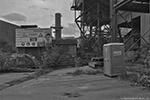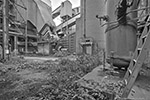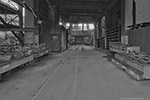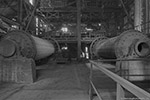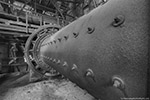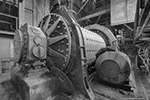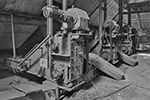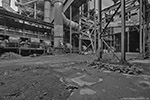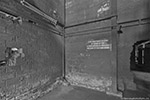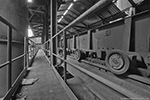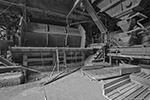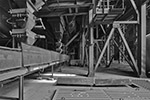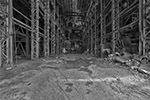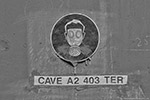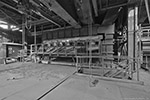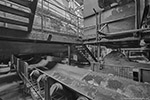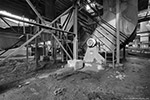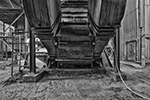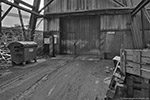Carsid Steel Production / Forges de la Providence - Charleroi Belgium |
Click on the photo to enlarge
History
In 1836 the Englishman Thomas Bonehill built puddling furnaces for the Puissant and Licot de Nîmes families. in 1838 the company Société Anonyme des laminoirs, forges, fonderies et usines de la Providence was formed by Clément-Joseph Delbruyère together with Edmond et Jules Puissant and Thomas Bonehill with a permitted capital of 1500,000 francs in order to construct a coke fire blast furnace, together with other equipment from Puissant and Bonehill's company la société le grand laminoir de la Providence, including steam engines (50 and 80 hp), and metal working equipment including hammers, four rolling mills, shears, puddling furnaces, casting equipment and molds as well as associated land, workshops and offices, and refractory brick manufacturing facilities.
The first steelworks was at Marchienne-au-Pont, Charleroi (Belgium); in 1843 the company decided to construct a second steelworks in Hautmont (France), equipped to produce plate and rails in expectation of orders for the construction of the French railways. In 1849 Bonehill's successor Alphonse Halbou patented a method for the production of I-beams by rolling.
Later, another steelworks in Réhon (France) was constructed, and the first blast furnace began production in 1866.
In 1898 a subsidiary SA Providence Russe opened a steelworks in Russia. The Russian company, based in Sartana nr. Mariupol, on the Sea of Azov, made heavy losses, and by 1902 went into administration, owing 6 million francs to the Providence company, and had to be re-financed by the Banque de l'Union Parisienne.
During the lifetime of the firm the three steel plants expanded.
In 1966 the Société Générale de Belgique had a majority shareholding in both Cockerill-Ougrée (Liege) and in the Forges de la Providence and decided to merge the two firms, forming Cockerill-Ougrée-Providence (Charleroi). This was contrary to the trade unions' preference for regional consolidation; the balance was not restored until 1979 when Thy-Marcinelle et Monceau (TMM) acquired the La Providence group from Cockerill-Ougrée-Providence et Espérance Longdoz, becoming Thy-Marcinelle-Providence. The Rehon plant became part of the Usinor group in November 1979.
In 1981 the company became part of the expanded Cockerill-Sambre.
Fate
The steelworks in France closed in the 1980s. The steelworks in Marchienne-au-Pont, Charleroi became part of Usinor in 1999 and then in 2001 became part of the Duferco group as Carsid. Carsid ended primary steel production in 2008 and was closed in 2012.
wikipedia.org


